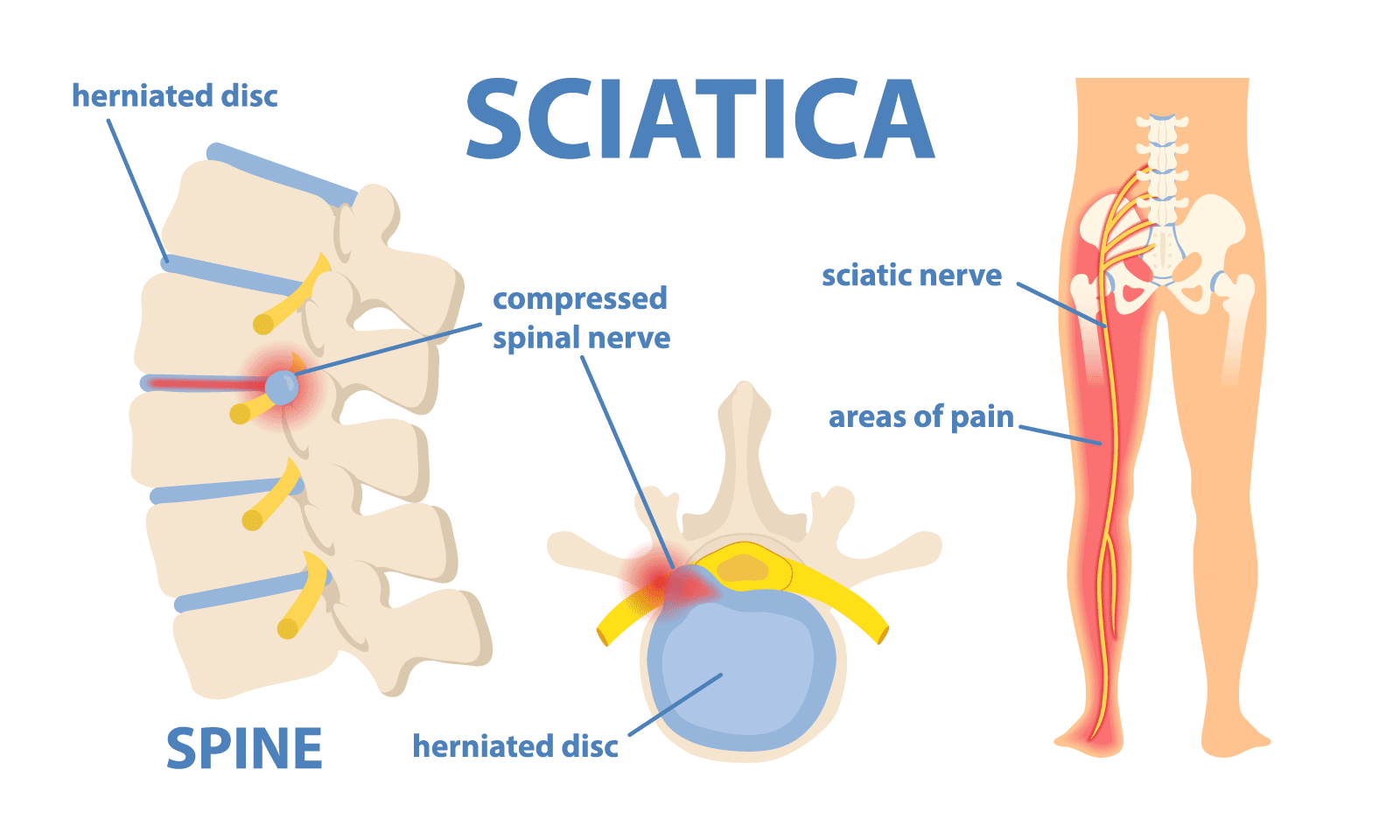Sciatica: Symptoms, Causes, and Treatment Options
Sciatica is a common yet often misunderstood condition that can cause debilitating back and leg pain. While sciatic pain can be persistent, the good news is it's often treatable, and most people recover fully. Whether you're experiencing symptoms yourself or seeking information for a loved one, this article will provide valuable insights into sciatica, including its symptoms, causes, treatment options, and outlook for recovery.

What is Sciatica?
Sciatica refers to pain that radiates along the sciatic nerve, which runs from the lower back down through the buttocks and into the legs. This pain typically affects one side of the body and can vary from mild discomfort to excruciating agony. Sciatica is not a medical condition in itself but rather a symptom of an underlying issue affecting the sciatic nerve.
Symptoms of Sciatica
The hallmark symptom of sciatica is pain that radiates from the lower back down through the buttocks and into one or both legs. Other common symptoms may include:
-
Sharp or shooting pain in the buttocks or leg, often worsened by sitting or standing for prolonged periods.
-
Tingling or numbness in the leg or foot.
-
Weakness in the affected leg, making it difficult to move or bear weight.
-
Pain that worsens with coughing, sneezing, or straining.
-
A pins-and-needle sensation.
-
Difficulty controlling the bowels or bladder (in severe cases).
Causes of Sciatica
Sciatica can be caused by various underlying conditions that put pressure on or irritate the sciatic nerve.

Some common causes include:
Herniated Disc: When the soft inner core of a spinal disc protrudes through the tough outer layer, it can compress the nearby nerve roots, including the sciatic nerve.
Degenerative Disc Disease: With age, the spinal discs can wear down and lose their cushioning properties, leading to narrowing of the spinal canal (spinal stenosis) and compression of the sciatic nerve.
Spinal Stenosis: Narrowing of the spinal canal can occur due to bone spurs, arthritis, or other degenerative changes in the spine, leading to compression of the sciatic nerve roots.
Piriformis Syndrome: The piriformis muscle, located in the buttocks, can sometimes irritate or compress the sciatic nerve, causing symptoms similar to those of sciatica.
Spondylolisthesis: This condition occurs when one vertebra slips forward over the one below it, potentially compressing the nerve roots that form the sciatic nerve.
Injuries: An injury to your spine or lower back can increase your risk of developing sciatica.
Pregnancy: Pregnancy can cause spine compression which can lead to sciatica.
Treatment Options for Sciatica
The treatment approach for sciatica depends on the underlying cause and the severity of symptoms. Some common treatment options include:
Pain Management: Over-the-counter pain relievers such as ibuprofen or acetaminophen may help alleviate mild to moderate sciatica pain. In more severe cases, prescription medications or muscle relaxants may be prescribed.
Ice: Similar to how you can treat a sprain or strain, cold packs are a great first step to treat sciatica pain. Remember to aways wrap ice in a towel and don't put ice directly on your skin. Apply cold packs for 20 minutes at a time.
Heat: After you treat with cold packs, switch to a heating pad or compress. Apply for 20 minutes at a time. You can alternate between cold and heat.
Physical Therapy: A structured physical therapy program can help strengthen the muscles supporting the spine, improve flexibility, and alleviate pressure on the sciatic nerve. Therapeutic exercises, stretches, and manual therapy techniques may be included.
Steroid Injections: Corticosteroid injections directly into the affected area around the sciatic nerve can help reduce inflammation and alleviate pain. These injections are typically administered under guided imaging to ensure accuracy.
Surgical Intervention: In cases where conservative treatments fail to provide relief or when sciatica is caused by a severe underlying condition such as a herniated disc, surgery may be considered. Surgical options may include discectomy (removal of the herniated disc material), laminectomy (removal of a portion of the vertebral bone to relieve pressure), or spinal fusion (joining two or more vertebrae together).
Outlook for Sciatica
The prognosis for sciatica varies depending on the underlying cause, the effectiveness of treatment, and individual factors such as overall health and lifestyle habits. In many cases, sciatica symptoms improve with conservative treatments such as physical therapy and pain management. However, some individuals may experience recurrent episodes of sciatica or chronic pain requiring ongoing management.
Get Help with Sciatica
Sciatica can be a source of significant discomfort and disability, impacting daily activities and quality of life. By understanding the symptoms, causes, treatment options, and outlook for sciatica, individuals can make informed decisions about their care and work towards finding relief from their symptoms.
If you're experiencing persistent back pain or sciatica symptoms, it's essential to consult with a healthcare professional for an accurate diagnosis and personalized treatment plan. With proper management and support, many individuals can effectively manage their sciatica and regain function and comfort. Contact the experts at The Centers for Advanced Orthopaedics to get help.

